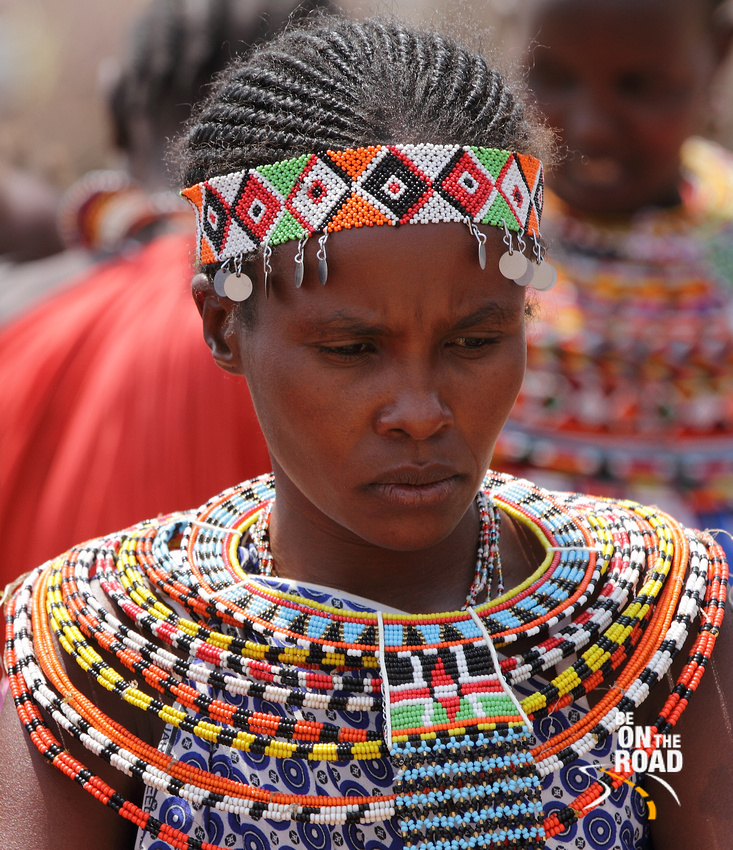The Colourful Samburu Tribe of Kenya: A Travel Photo Series

They are related to the famous Maasai tribe living in the Maasai Mara game reserve in Kenya. They are one of the more dominating tribes of north-central Kenya. They are semi-nomadic pastoralists who mainly herd cattle, but also keep sheep, goats and camels. I am talking about the colourful Samburu tribe who live north of the equator in Kenya and live in very diverse and beautiful landscapes that span high altitude forests, open plains, semi-arid grass and bush land to complete desert. One of their main settlements is on the fringes of Samburu National Park in North Kenya and this is where I met them. Experiencing the Samburu National reserve and the Samburu tribe becomes a beautiful one-two combo for a rich wildlife and culture experience.
This travel photo series aims to share with you the colourful personalities and traditional life of the beautiful Samburu tribal people. Hope you enjoy these vibrant visuals of these gorgeous tribal people of Kenya.
Above picture: The Samburu tribe is known for its colourful beadwork jewellery. Here you can see a Samburu woman wearing such colourful head and neck bead jewellery.

Above picture: Samburu men also adorn themselves with such colourful bead jewellery making them fantastic looking male models too. 
Above picture: Here is another Samburu tribal woman sporting colourful beadwork necklace, ear rings and head gear. The concentric rings on the necklace makes her look similar to the long necked Karen tribal women of Myanmar, but thankfully their necks have not been lengthened.

Above picture: Seen in this photo is a game with seeds and compartments played only by the elderly men of the Samburu tribe. This game is very similar to Pallanguzhi, a traditional ancient mancala game played in South India, especially Tamil Nadu and Kerala.

Above picture: It is said that the more beads or necklaces are there on a woman, the more beautiful she is considered. Another point on the same line of thought is that, women wore more necklaces as they got richer. Therefore, the number of beads or necklaces indicate status in society, richness level and beauty.

Above picture: The Samburu people speak the Samburu language, which is a Nilo-Saharan language. Their language is more or less similar to Maa (the language that the Maasai speak). The Samburu tongue is also related to Turkana and Karamojong and more distantly to Pokot and the Kalenjin languages.

Above picture: Like all kids, the Samburu kids are also full of energy and innocent smiles. They can be seen wearing Western attire.

Above picture: The elders occupy a very important role in the Samburu society and all the power rests with them. They have a polygamous system where the elders decide who can marry and can have how many wives. This kind of control keeps trouble at rest or at least that is the belief.

Above picture: In the Samburu tribe, the men take care of security, cattle herding and playing mock fight games to improve their warrior skills.

Above picture: While the Samburu women take care of things like building houses, collecting firewood and food from the forest, cooking food, taking care of the young ones and in doing craftsmanship.

Above picture: The Samburu love to sing and dance, but traditionally use no instruments. They have dances for various occasions of life. The men dance jumping and high jumping from a standing position is a great sport. Most dances involve the men and the women dancing in their separate circles with particular moves for each sex, but coordinating the moves of the two groups. A lot of their dances involve elaborate movements of their chest.

Above picture: Girls get married pretty early. Sometimes before they turn 18. Both boys and girls go through an initiation into adulthood, which involves training in adult responsibilities and circumcision for boys and clitoridectomy for girls. Ouch!

Above picture: If you wish to marry a Samburu woman, all you have to do is give the chief of the village 2 cows. That is how weddings happen in the Samburu culture.

Above picture: The hard working Samburu woman. She works in the forest, inside the house and in the manyatta or settlement.

Above picture: A typical Samburu house is built by the wives of that house using sticks, mud, dung and plastic (for waterproofing).



































